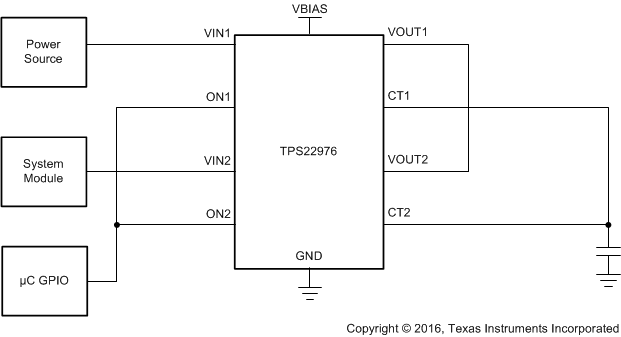JAJSCO4D November 2016 – December 2023 TPS22976
PRODUCTION DATA
- 1
- 1 特長
- 2 アプリケーション
- 3 概要
- 4 Device Comparison Table
- 5 Pin Configuration and Functions
-
6 Specifications
- 6.1 Absolute Maximum Ratings
- 6.2 ESD Ratings
- 6.3 Recommended Operating Conditions
- 6.4 Thermal Information
- 6.5 Electrical Characteristics (VBIAS = 5V)
- 6.6 Electrical Characteristics (VBIAS = 2.5V)
- 6.7 Switching Characteristics (TPS22976)
- 6.8 Switching Characteristics (TPS22976A)
- 6.9 Switching Characteristics (TPS22976N)
- 6.10 Typical DC Characteristics
- 6.11 Typical AC Characteristics
- 7 Parameter Measurement Information
- 8 Detailed Description
- 9 Application and Implementation
- 10Device and Documentation Support
- 11Revision History
- 12Mechanical, Packaging, and Orderable Information
9.1.4 Reverse Current Blocking
Reverse current blocking is often desired in specific applications, as it prevents current from flowing from the output to the input of the load switch when the device is disabled. With the configuration illustrated in Figure 9-4, the TPS22976 can be converted into a single-channel switch with reverse current blocking. VIN1 or VIN2 can be used as the input and VIN2 or VIN1 as the output.
 Figure 9-4 Reverse Current Blocking
Figure 9-4 Reverse Current Blocking